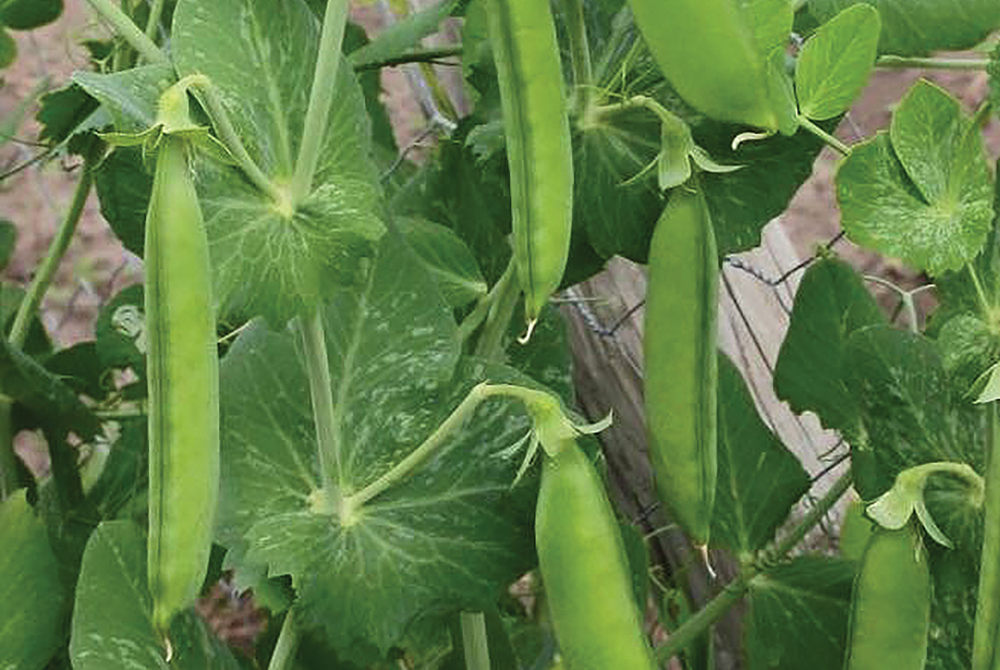Let It Grow
By Tammy Thornton
While some of you may celebrate the holiday by dyeing everything green, gardeners know that St. Patrick’s Day is the ideal time to plant peas. But that’s just a rule of thumb. Technically, you can plant peas as soon as the soil can be worked. In our Shore Local area, that can be as early as February. Since peas are a cool-season vegetable, you don’t need to wait until after the last frost date. In fact, a light snow won’t hurt your pea plants but can offer them a protective layer of insulation like a blanket. Old-time farmers have nicknamed snow “poor man’s fertilizer” since snow can contain nutrients such as nitrogen that are slowly released into the soil as the snow melts.
Since peas don’t like to have their roots disturbed, it’s best to plant the seeds directly into the garden. So you don’t need to bother with grow lights and fancy setups for starting seeds indoors. However, to aid in germination, it’s a good idea to soak your pea seeds overnight before planting them. By morning, they will be rehydrated, swollen, and ready for planting. Because peas grow as a vine, you will need to provide them with some type of support system. A trellis or simple structure using bamboo stakes and garden twine will do the trick for these climbing plants. Be sure to set up your trellis or other support system first. This way, you’ll know exactly where to plant your seeds without disturbing them later. Choose a sunny location, and plant your peas about one inch deep in moist but well-drained soil. To lengthen the harvest time, plant a succession of seeds, ending with a variety of heat-resistant peas.

Once you see the pretty little flowers in white, pink, or purple, you’ll know that the pea pods aren’t far behind. Harvest your peas early and often; smaller peas will be the sweetest. Peas will become starchy if left on the vine for too long. Once your peas start producing, check them every other day for harvesting, since the more you pick them, the higher the yield. The peas may not make it to your kitchen because they are so sweet. You may want to eat them all raw, right from the pod, while standing in your garden. If they do make it into the house, eat them as soon as possible because they taste best fresh. In a short time, the sugars turn to starch. To preserve their fresh flavor, blanch peas in boiling water for one minute, plunge them in cold water, then dry the peas, and freeze them. You can also eat pea shoots (sprouts), including the leaves, tendrils, and flowers. Cut them very young to use as microgreens. They can be eaten raw in salads or sandwiches, or cooked in dishes such as stir fry or pasta.
Experiment with different types of peas to find your favorite. Garden peas (also known as English peas, shelling peas, or sweet peas) have a tough, inedible pod that needs to be removed before you eat the peas. Snap peas and snow peas can be eaten pod and all, though you may need to remove the string from the edge of the pod. As you may know, snow peas are flat thin pea pods containing small peas.
Peas are a rewarding vegetable to kick off your gardening season. They like cool weather, are easy to grow, and are fast growers. Not only are they a source of protein and other nutrients for your own health, but they are also beneficial for your garden soil. By the time your pea plants have stopped producing, it will be warm enough to plant different types of vegetables. Turn the pea plants into your soil, or add them to your compost pile, making room for the next crop.
What is your favorite variety of peas to grow? What types of trellises work best for you? We would love to hear from our readers. Send your gardening comments, questions, and topic suggestions to: shorelocalgardener@gmail.com.
Tammy Thornton lives with her husband, children, and crazy pets while enjoying a life of gardening, cooking, and going to the beach.














